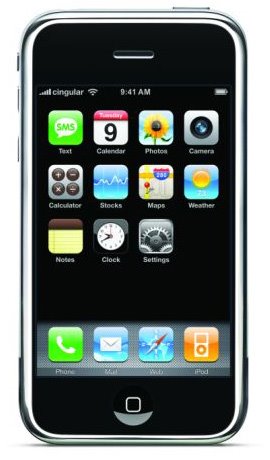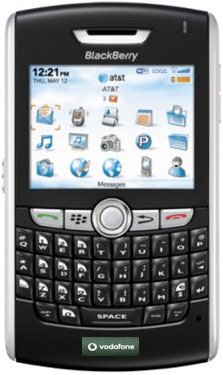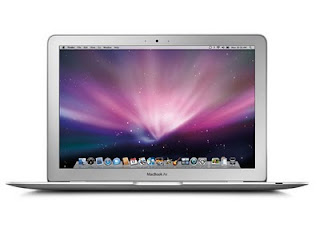The good: An excellent package of Blu-ray, Nvidia graphics, a fast processor, and great speakers help the M645-S4118X rise above the pack.
The bad: The thick plastic chassis and a bad battery life could ruin the equation for some.
The bottom line: The Toshiba Satellite M645-S4118X has a killer combination of Blu-ray, high-end graphics, and a fast processor at a price slightly north of $1,000, but poor battery life is the Achilles' heel on what would otherwise be an ideal 14-inch laptop.
There might be nothing more disappointing as a product that approaches perfection, only to be undone by one key failure. The Toshiba Satellite M645-S4118X isn't a perfect laptop per se, but its features certainly fit the bill: a second-generation Core i5 processor, high-powered Nvidia GeForce GT 525 graphics with Optimus, a Blu-ray drive, fantastic speakers, a 500GB hard drive, and 6GB of RAM, all packed into a 14-inch laptop's frame, for $1,099. Did we mention it also has a backlit keyboard? That it does.
So what could possibly be wrong with such a computer? The battery life. The M645 didn't even last three hours. That's a small step up from the abysmal battery life on last year's M645 we reviewed, but how can this be? The slimmer Toshiba Portege R835, also packing a standard-voltage Core i-series processor, lasted over 7 hours. Fix the battery, and you have a four-star laptop. As it currently stands, however, that battery life's a serious hindrance for any serious traveler.
We've grumbled about the somewhat ugly design aesthetic going on in Toshiba Satellite laptops many times before, and nothing's changed in this year's model. It's externally identical to last year's Satellite M-series redesign, which added a raised island-style keyboard, finger-resistant raised textured patterns on the interior and back lid, and plenty of small, bright LED light indicators above and around the keyboard.
The M645's more compact footprint is less intrusive than its more boat-like 15.6-inch cousins, such as the A665, but it's a good deal thicker than a MacBook Pro or Toshiba's own Portege. The Charcoal Fusion patterned plastic texture that covers the M645 looks a little garish, but it does stave off smudges.
The keyboard feels better than previous Satellite laptops, but the keys have a shiny gloss to them, and are a bit smaller than they are on the A665. Some might feel cramped, which is a shame, as there's plenty of extra room on the sides of this laptop; the keyboard could have been expanded edge-to-edge for extra finger room. The keyboard is backlit, however, which is a plus.
The touch pad beneath has a light matte finish and is responsive, but the pad is also not that big, and the large plastic discrete buttons below feel cheap.
Above the keyboard, an LED-backlit set of touch controls operates volume, an Eco battery-saving utility, Wi-Fi on/off, and backlighting. An annoying beep kicks in when raising or lowering volume--you'll need to dig deep into system settings to deactivate, and trust us, you'll want to.
The 1,366x768-pixel glossy inset display does the job for video playback and looks reasonably crisp, but the screen brightness and vividness don't pop like we've seen on laptops such as the Dell XPS 15-L502X and Samsung Series 9. As a result, Blu-ray playback suffers. Movies we watched were enjoyable, but we wouldn't call the experience excellent. On the plus side, Toshiba's DVD-playing software includes upscaling of DVD content, and it does help make old discs look a little better.
What makes media really shine on the Satellite M645 are the stereo Harman/Kardon speakers. We've raved about Toshiba's laptop speaker quality before; well, here we go again. The clarity of audio playback does help improve movie-watching, although we've heard even better audio out of the Dell XPS.
As for the Webcam--an often-neglected feature on many laptops--well, the M645's 640x480 camera isn't really worth talking about. It's the same one we saw on a recently reviewed Satellite A665. It's not HD, and its middling picture quality and light sensitivity don't make it stand out.
The Satellite M645-S4118 comes with all the ports and connections you'd be looking for in 2011: USB 3.0, a sleep-and-charge USB port, HDMI, Bluetooth, and a Blu-ray optical drive. The included RAM and hard drive are also above-average for today's midrange laptops: a generous 6GB of RAM and a 640GB hard drive. Then again, this laptop costs more than the average laptop.
We certainly can't complain about the performance of the Satellite M645-S4118's processors. A second-generation 2.3 GHz Intel Core i5-2410M CPU is the same one we've already seen in the Editors' Choice-winning Toshiba Portege R835-P56X. Not surprisingly, the M645 had nearly identical performance benchmarks in both single and multitasking tests. It's plenty of computer for nearly anyone, and honestly, it's capable of doing whatever the average person will throw at it. Video editing, multiple windows of video--you should have no problems here.
The M645's graphics are also well above average: the Nvidia GeForce GT525M GPU and its 1GB of video memory gave us some of the best recent gaming benchmarks outside of the 15-inch 2011 Apple MacBook Pro and--not surprisingly--the new Dell Alienware M14x. Unreal Tournament III played at a smoking 140.9 frames per second in native 1,366x768-pixel resolution, with graphics settings at medium. Other games, such as Activision's Blur, played great with graphics settings amped up and speakers blaring. We achieved better graphics performance than we did on the Dell XPS L502X. In short, this is a laptop that'll do fine duty for gamers on nearly all fronts.
So what could possibly be wrong with such a computer? The battery life. The M645 didn't even last three hours. That's a small step up from the abysmal battery life on last year's M645 we reviewed, but how can this be? The slimmer Toshiba Portege R835, also packing a standard-voltage Core i-series processor, lasted over 7 hours. Fix the battery, and you have a four-star laptop. As it currently stands, however, that battery life's a serious hindrance for any serious traveler.
| Price as reviewed | $1,099 |
| Processor | 2.3GHz Intel Core i5-2410M |
| Memory | 6GB, 1,333MHz DDR3 RAM |
| Hard drive | 640GB, 5,400rpm |
| Chipset | Intel HM65 |
| Graphics | Nvidia GeForce GT 525M + Intel HD 3000 (Nvidia Optimus) |
| Operating system | Windows 7 Home Premium (64-bit) |
| Dimensions (WD) | 13.3 x 9 inches |
| Height | 1.1-1.4 inches |
| Screen size (diagonal) | 14 inches |
| System weight / Weight with AC adapter | 5 /5.8 pounds |
| Category | Midsize |
The M645's more compact footprint is less intrusive than its more boat-like 15.6-inch cousins, such as the A665, but it's a good deal thicker than a MacBook Pro or Toshiba's own Portege. The Charcoal Fusion patterned plastic texture that covers the M645 looks a little garish, but it does stave off smudges.
The keyboard feels better than previous Satellite laptops, but the keys have a shiny gloss to them, and are a bit smaller than they are on the A665. Some might feel cramped, which is a shame, as there's plenty of extra room on the sides of this laptop; the keyboard could have been expanded edge-to-edge for extra finger room. The keyboard is backlit, however, which is a plus.
The touch pad beneath has a light matte finish and is responsive, but the pad is also not that big, and the large plastic discrete buttons below feel cheap.
Above the keyboard, an LED-backlit set of touch controls operates volume, an Eco battery-saving utility, Wi-Fi on/off, and backlighting. An annoying beep kicks in when raising or lowering volume--you'll need to dig deep into system settings to deactivate, and trust us, you'll want to.
The 1,366x768-pixel glossy inset display does the job for video playback and looks reasonably crisp, but the screen brightness and vividness don't pop like we've seen on laptops such as the Dell XPS 15-L502X and Samsung Series 9. As a result, Blu-ray playback suffers. Movies we watched were enjoyable, but we wouldn't call the experience excellent. On the plus side, Toshiba's DVD-playing software includes upscaling of DVD content, and it does help make old discs look a little better.
What makes media really shine on the Satellite M645 are the stereo Harman/Kardon speakers. We've raved about Toshiba's laptop speaker quality before; well, here we go again. The clarity of audio playback does help improve movie-watching, although we've heard even better audio out of the Dell XPS.
As for the Webcam--an often-neglected feature on many laptops--well, the M645's 640x480 camera isn't really worth talking about. It's the same one we saw on a recently reviewed Satellite A665. It's not HD, and its middling picture quality and light sensitivity don't make it stand out.
| Toshiba Satellite M645-S4118X | Average for category [mainstream] | |
|---|---|---|
| Video | VGA, HDMI | VGA plus HDMI or DisplayPort |
| Audio | Stereo speakers, headphone/microphone jacks | Stereo speakers, headphone/microphone jacks |
| Data | 1 USB 3.0, 2 USB 2.0 (1 with sleep-and-charge), SD card slot | 3 USB 2.0, SD card reader |
| Expansion | None | None |
| Networking | Ethernet, 802.11n Wi-Fi, Bluetooth | Ethernet, 802.11n Wi-Fi, Bluetooth, optional mobile broadband |
| Optical drive | Blu-ray combo drive | DVD burner |
We certainly can't complain about the performance of the Satellite M645-S4118's processors. A second-generation 2.3 GHz Intel Core i5-2410M CPU is the same one we've already seen in the Editors' Choice-winning Toshiba Portege R835-P56X. Not surprisingly, the M645 had nearly identical performance benchmarks in both single and multitasking tests. It's plenty of computer for nearly anyone, and honestly, it's capable of doing whatever the average person will throw at it. Video editing, multiple windows of video--you should have no problems here.
The M645's graphics are also well above average: the Nvidia GeForce GT525M GPU and its 1GB of video memory gave us some of the best recent gaming benchmarks outside of the 15-inch 2011 Apple MacBook Pro and--not surprisingly--the new Dell Alienware M14x. Unreal Tournament III played at a smoking 140.9 frames per second in native 1,366x768-pixel resolution, with graphics settings at medium. Other games, such as Activision's Blur, played great with graphics settings amped up and speakers blaring. We achieved better graphics performance than we did on the Dell XPS L502X. In short, this is a laptop that'll do fine duty for gamers on nearly all fronts.




0 comments:
Post a Comment